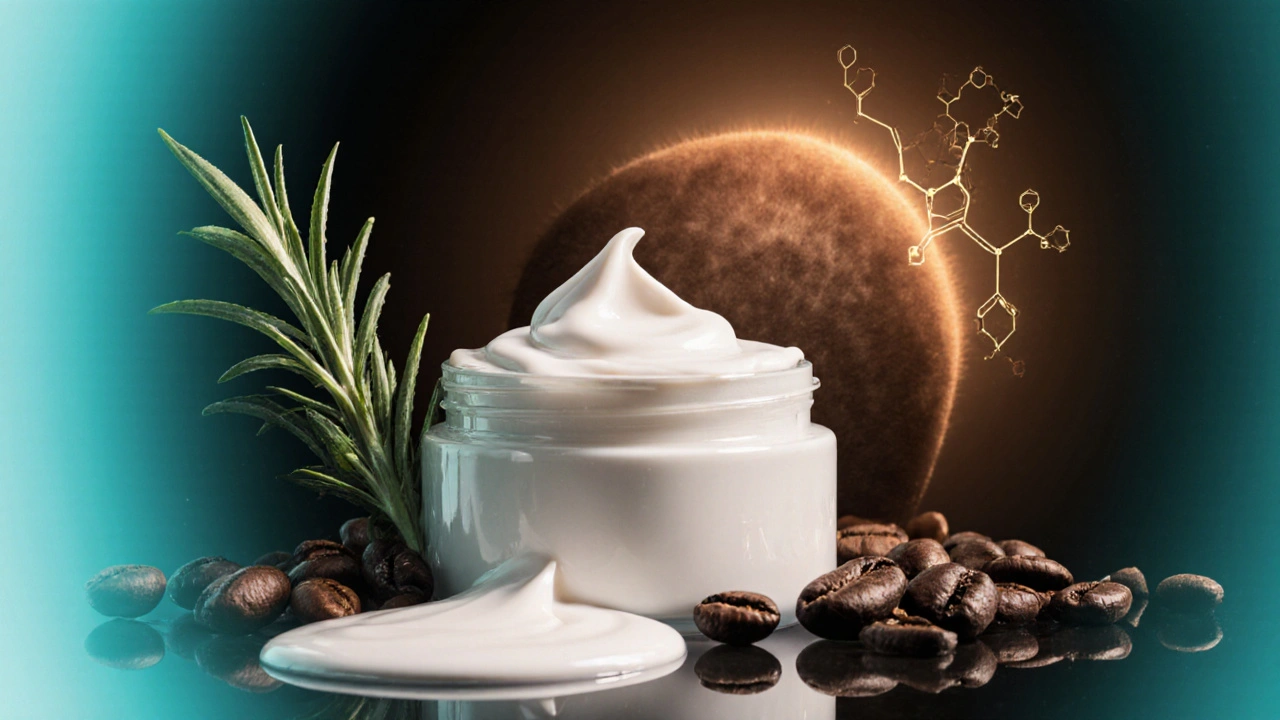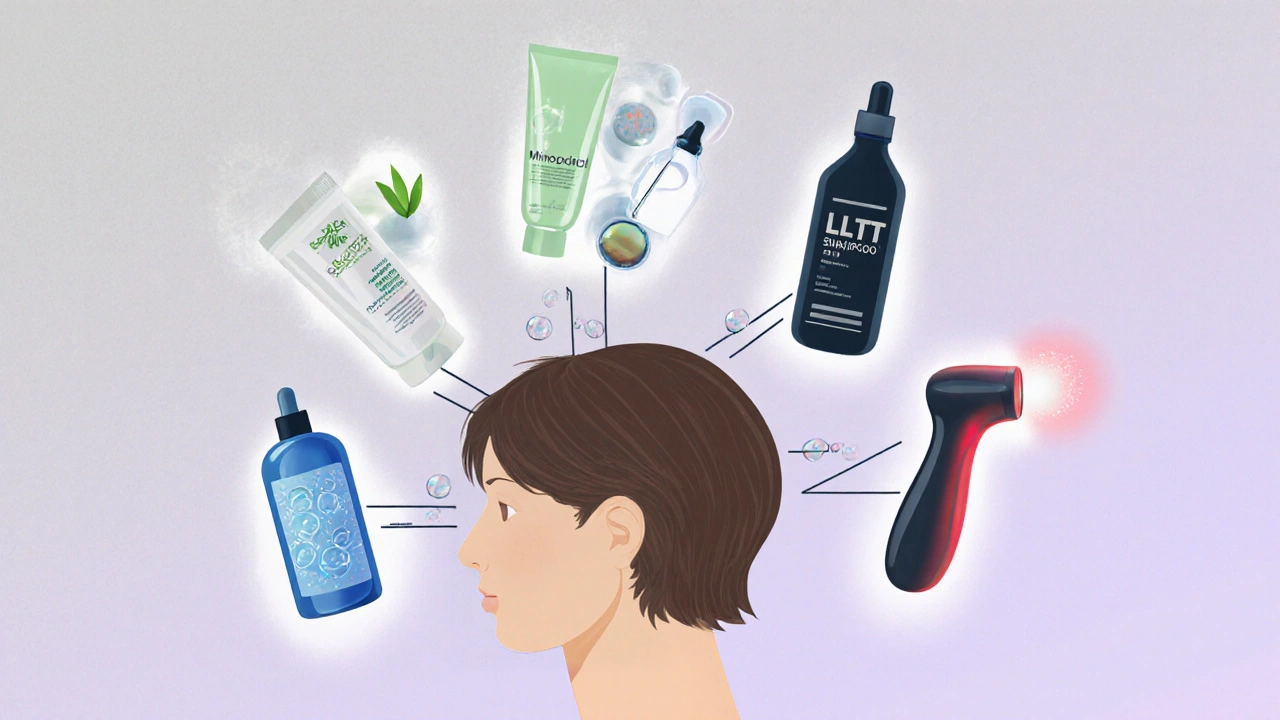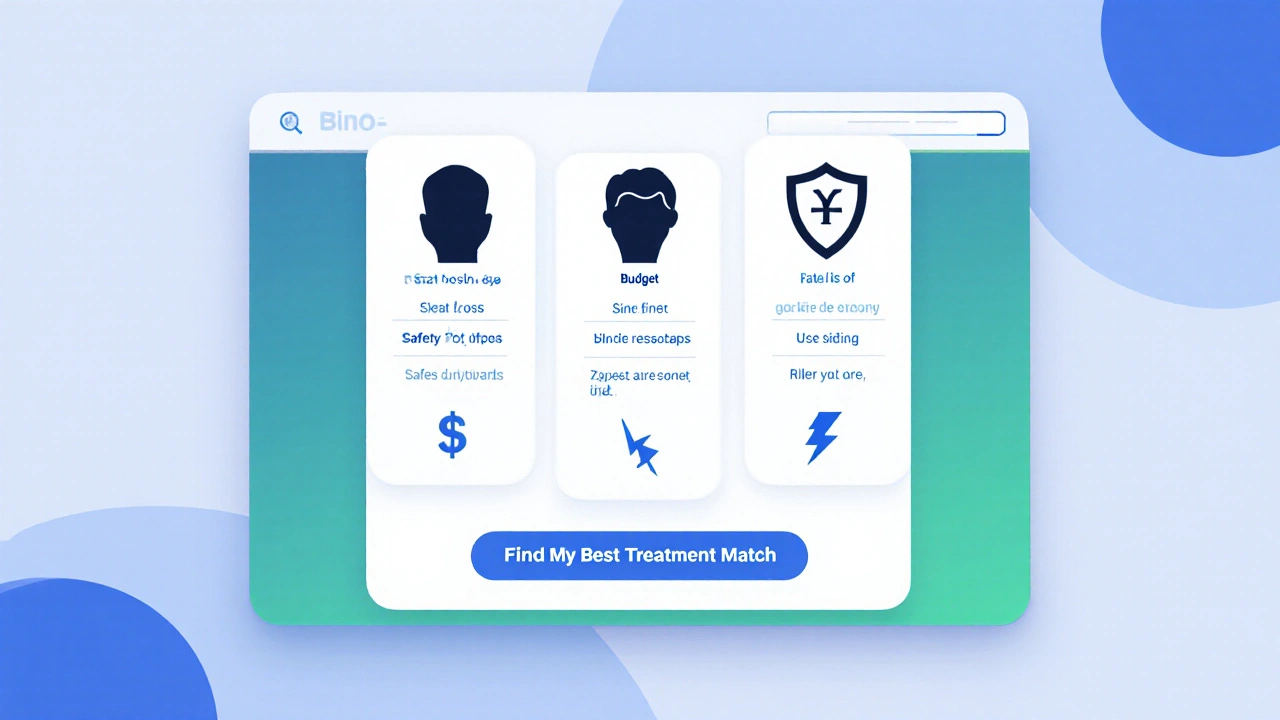Herbal Hair Loss Cream vs Alternatives: Comparison Tool
TL;DR
- herbal hair loss cream uses plant extracts to block DHT and soothe the scalp, but results vary by individual.
- Synthetic options like minoxidil and finasteride have stronger clinical backing but may cause side effects.
- Shampoos, laser devices, and oral supplements can complement any regimen, especially for early‑stage thinning.
- Pick a product based on hair‑loss type, budget, safety tolerance, and how quickly you need visible growth.
- Combine proven methods-e.g., a gentle herbal cream with a DHT‑blocking supplement-for the best odds of regrowth.
What Is herbal hair loss cream?
When it comes to regrowing thinning strands, a topically applied formulation that relies on plant‑derived actives such as saw palmetto, caffeine, and rosemary oil to inhibit DHT and stimulate follicles is gaining popularity among people who want a natural route. The market is crowded, with brands touting everything from "clinically proven" to "ancient Ayurveda".
How Does It Work?
The core idea is simple: plant compounds can either block the hormone dihydrotestosterone (DHT) that shrinks hair follicles or improve blood flow to the scalp. Key ingredients often include:
- Saw Palmetto - a fruit extract that mimics the DHT‑blocking effect of prescription drugs.
- Caffeine - stimulates follicle cells and extends the growth phase.
- Rosemary Oil - shown in a 2015 study to improve hair count comparable to minoxidil after six months.
- Biotin - a B‑vitamin that supports keratin production.
Because the actives are delivered in a cream base, they sit on the scalp for a few hours before being absorbed. Consistency matters; most brands recommend daily use for at least three months before judging effectiveness.

Alternatives Overview
Below are the most common non‑herbal options you’ll encounter when researching hair‑loss solutions.
Minoxidil is an FDA‑approved topical vasodilator that prolongs the anagen (growth) phase of hair follicles. It’s sold over the counter in 2% and 5% strengths and works for both men and women.
Finasteride is an oral 5‑alpha‑reductase inhibitor that reduces systemic DHT levels. Prescription‑only and most effective for male‑pattern baldness.
Ketoconazole Shampoo is an anti‑fungal wash that also lowers scalp DHT and reduces inflammation. Typically used twice a week alongside other treatments.
Low‑Level Laser Therapy (LLLT) is a device‑based method that emits red light to boost cellular metabolism in hair follicles. FDA‑cleared for home use.
Saw Palmetto Supplement is an oral capsule containing the same fruit extract found in many creams, intended to block DHT from inside out. Often paired with biotin or zinc.
How the Choices Stack Up
| Feature | Herbal Cream | Minoxidil | Finasteride | Ketoconazole Shampoo | LLLT Device |
|---|---|---|---|---|---|
| Primary Action | Plant‑based DHT blocking & scalp nutrition | Vasodilation, prolongs growth phase | Systemic DHT reduction | Anti‑fungal, modest DHT cut | Photobiomodulation, cell metabolism |
| Prescription Needed | No | No (OTC) | Yes | No (OTC) | No (OTC) |
| Typical Cost (Monthly) | $30‑$60 | $25‑$40 | $70‑$100 | $15‑$30 | $180‑$350 |
| Side‑Effect Profile | Minor irritation, low allergy risk | Scalp itching, rare dermatitis | Sexual dysfunction, mood changes | Dryness, mild irritation | Eye strain, temporary redness |
| Clinical Evidence | Small studies, anecdotal support | Robust RCTs, FDA‑cleared | Large RCTs, FDA‑cleared | Limited, mainly anti‑fungal data | Growing body of RCTs, FDA‑cleared |
Choosing the Right Option for You
Use the following checklist to narrow down the best fit:
- Identify the type of hair loss. Male‑pattern (androgenic) baldness responds best to DHT blockers. Diffuse shedding may benefit from scalp‑nutrient creams.
- Set a safety tolerance. If you’re wary of systemic meds, stick with topical or natural solutions.
- Budget considerations. Herbal creams are moderate‑priced, but laser devices can be a big upfront investment.
- Desired speed. Prescription drugs often show results in 2‑3 months; natural creams may need 4‑6 months.
- Combine wisely. Pair a mild herbal cream with an anti‑fungal shampoo to cover both DHT and scalp health.
Practical Tips & Safety
Before you start any regimen, keep these pointers in mind:
- Do a patch test: apply a pea‑sized amount on the inner forearm for 24hours to rule out irritation.
- Read the label for DHT blockers concentration-5‑10% is common in strong formulas.
- Maintain a balanced diet rich in iron, zinc, and vitaminD; deficiencies can blunt treatment benefits.
- Track progress with photos taken every four weeks; subjective impressions are unreliable.
- Consult a dermatologist if you notice rapid shedding or scalp inflammation-sometimes hair loss signals an underlying condition.

Frequently Asked Questions
Can a herbal cream replace minoxidil?
It can work for mild thinning, but most clinical data still favor minoxidil for moderate‑to‑severe androgenic loss. Many users combine both to maximize results.
Are there any long‑term safety concerns with herbal creams?
Because the actives stay on the surface, systemic absorption is minimal. The biggest risk is skin irritation or allergic reaction to essential oils.
How long before I see new hair growth?
Most users report visible new hairs after 3‑4months of consistent use. Patience is key; hair cycles are naturally slow.
Should I use a shampoo with my herbal cream?
Yes. A gentle, sulfate‑free shampoo-ideally one with ketoconazole if you have scalp oiliness-helps keep pores clear and lets the cream penetrate better.
Is there a difference between men’s and women’s herbal creams?
Formulations may vary in hormone‑blocking strength. Women’s versions often have lower DHT‑blocking potency to avoid hormonal imbalance, while men’s creams might include higher concentrations of saw palmetto.
